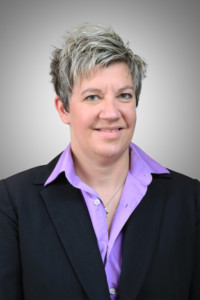After an extensive, nationwide search for a new meat scientist for Prairie View A&M University’s College of Agriculture and Human Sciences (CAHS), Lea Ann Kinman, Ph.D. was chosen to lead the meat lab in a new and promising direction. A former animal science professor at Tarleton State University, Dr. Kinman is a passionate advocate for classroom learning, and her goals include bridging the traditional classroom experience to the meat lab for research and innovative hands-on experience. Dr. Kinman sat down for a Q&A to discuss several topics, including her excitement about working at PVAMU, her plans for the lab, and why the students should embrace the meat industry.
Q. What made you interested in coming to work at PVAMU?
A. This [meat lab] right here. This new building. I love to teach, and I love meat science. I’ve been in academia teaching meat science and running meat labs for about 13 years. During my undergraduate studies, I worked in the university meat lab. I love the hands-on side to it. And I love the fact that it’s a different type of classroom. I like to tell people that you have to rethink the classroom. People will ask me ‘well, why aren’t you in a classroom?’ This is my classroom, teaching consumers where their food comes from. So, when this opportunity came about, it was exciting to me to have this clean slate and be able to follow a vision.
Q. What specifically interests you about animal science?
A. It’s the science behind it. When I was younger, I didn’t like chemistry classes much because they were challenging for me. But, when I started applying chemistry and science to actual meat and food, it made a lot more sense. The science part is what excites me. What we do with the animal from the beginning, impacts that piece of meat on your plate. So, learning what happens from a breeding standpoint or even nutrition impacts what happens when I cut up that carcass or cook that steak. It’s the whole system of animal science that excites me.
Q. What do you plan to do in your new role?
A. I want to put Prairie View on the map, and I’m going to do it with this building. Everyone knows about [Texas] A&M up the road; they have Camp Brisket, Beef 706, etc. I want to do something here that puts us on the map. I also want to use it as a recruiting tool. My vision would be to bring in local junior high and high school students, 4-H, FFA, and even culinary science programs. Bring them here for workshops, teaching them where their food comes from. Breaking down a carcass in front of them and showing them exactly where a ribeye steak comes from. Showing them the difference between a porterhouse and a T-bone steak, and the anatomy of an animal.
Q. What are your long-term goals for the lab?
A. I want students constantly coming in and out of here. I want to help increase the recruitment here. When I was at Tarleton most of the students coming to Tarleton were from the Houston area. They’re literally driving right past here. Why are they going there? If we’ve got something here that’s better, let’s entice them to come here. My short term and long-term goals are recruitment, increasing student numbers here on campus, increasing Ag majors, possibly creating a meat science certificate to give these students even more knowledge beyond the classroom. I want to see students on the processing floor Monday through Friday, excited to come in and learn here and bring the excitement.
Q. Do you have a favorite type of meat to work with?
A. They’re all pretty much my favorite, but in all my career, I haven’t worked with a lot of goat. I’m excited about the opportunity for myself to learn a little bit more about goats, creating different cuts or different sausages with goat. I love to cut up beef carcasses as well. There’s so much to it, especially the forequarter.
Q. Explain to students still unsure about earning an agriculture degree all the benefits that can come from it.
A. I can guarantee you a job in the meat and food industry. I can hang my hat on that because we feed the world. There are always jobs. You can work in feedlots, nutrition, ingredient companies, food safety, and even the regulatory side of the industry. There’s also research and development. Another popular trend right now is alternative protein. That takes a lot of science to understand ingredients and how they function. And, if a student likes working with live animals, you can still go to work for companies like Seaboard or Tyson. You don’t have to be anywhere near the plant. The meat and food industry is huge, it encompasses everything.
Q. What else would you like readers to know?
A. If they want to tour the new meat lab, if they’re interested in the meat industry, feel free to reach out to me. I’m here to answer any questions for anyone.
Dr. Kinman’s office is in the Meat Lab, room 112. Her phone number is 936-261-5053 and she can also be reached at lakinman@pvamu.edu.
Pascale Mondesir
Communication Specialist
pamondesir@pvamu.edu

